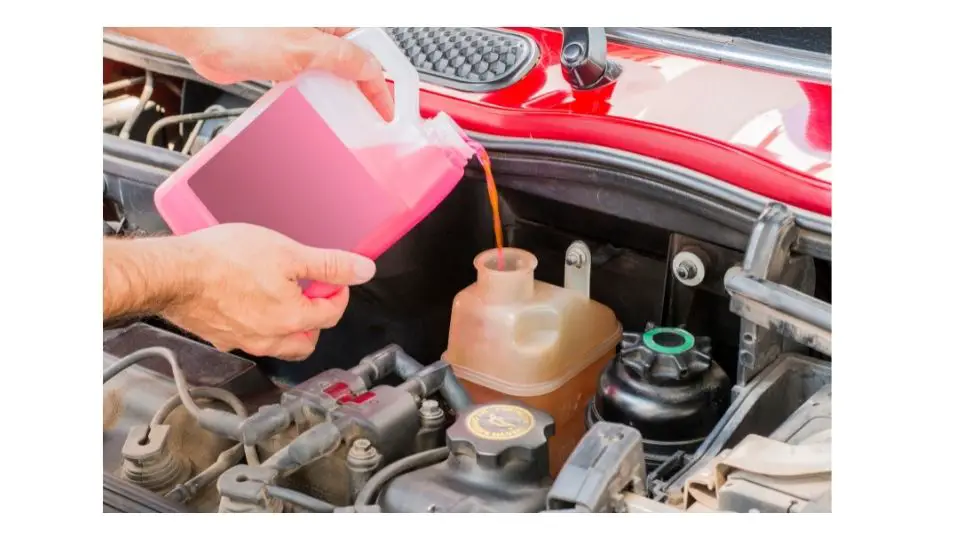Engines produce a lot of heat and the majority of it is wasted since the average thermal efficiency of an engine is around 35%. A large portion of this unwanted heat is emitted through the exhaust but the exhaust is not enough to get rid of a large amount of heat produced by an engine.
The excess heat poses threat to various parts of a car including the engine, transmission, and electronic components if it is left unchecked. However not all heat is bad for a car as it is a known fact that a car’s engine performs best when it gets warm, though, after some time it starts producing excess heat which is bad for various components.
Therefore here I have answered some of the most frequently asked questions about a coolant. Many people ask whether they can mix red and green color coolant.
The answer to this question is simply NO. This is because both of them have different compositions of various chemicals and mixing them together can mess up the boiling and freezing point of the whole cooling system. It can even cause the cooling lines and the engine to crack in winters since the coolant’s freezing point will be higher if you have mixed them.
Mixing Red and Green antifreeze
A car’s cooling system is designed to dissipate excess heat produced by an engine so that it continues to operate at the most suitable temperature where its efficiency is at its maximum.
An efficient engine not only consumes less fuel but also provides the best performance. A vehicle’s cooling system consists of a liquid called a coolant which circulates the engine and transmission, the hot coolant is then passed through the radiator where a fan brings its temperature down.
There are different kinds of coolants available nowadays and their color varies from kind to kind. Modern-day coolants last much longer and can also dissipate excess heat much more efficiently.
Apart from getting rid of heat, a good quality coolant also lowers the freezing point of the entire cooling system so that it doesn’t freeze in winters.
The availability of different kinds of coolants in the market has provided car owners with a wide variety of options but at the same time has also created confusion for some people. Every coolant has its unique properties that make it distinct from other types of coolants therefore it is necessary to make sure that your car’s cooling system gets the right kind.
Is there a difference between red and green coolant?
Coolants are generally identified by their color, but it is not a good practice, because the same kind of coolant can have different colors. The color of a coolant is due to the compounds used in it to prevent rust in the cooling system, it can tell you some worthy information about the coolant’s properties.
However as I said before a coolant’s kind cannot be judged by its color, besides there are some other important things that you should keep in mind regarding a vehicle’s coolant.
It is a good idea to flush all the coolant out if you have mistakenly mixed red and green coolant in the radiator or the coolant reservoir.
After flushing the solution of red & green coolant you can add the recommended type of coolant to the system. It might cost you a little bit but it’ll be beneficial in the long run since it’ll last much longer and won’t damage any part of the engine.
Another mistake that people frequently make is that they continue to use the same coolant even after five years or 100,000 miles. Using a coolant for such a long duration creates problems and can produce rust in the radiator and other metallic parts.
Therefore it is advised to flush the coolant every 5 years or 100,000 miles (whichever comes first) so that any residue metallic parts from constant circulation get out of the system and no metallic part gets rusty due to an old cooling fluid.
Conclusion on Mixing Red and Green Antifreeze/Coolant
Coolant is extremely important and plays a huge role in the whole cooling system of your vehicle, it is extremely crucial to understand how coolant works, I hope this article helped shed a light on whether or not should you mix the two antifreeze.

Robert Anderson is a world class motorhead who rebuilt his first carb at age 10, his first engine at age 15, and completed his first full hotrod build when he was just 18! Previously, he has ran a part warehouse, delivered pizzas, and managed the service department for a $20 million/year revenue dealership. Robert knows cars like few others and he is passionate about sharing his knowledge.

